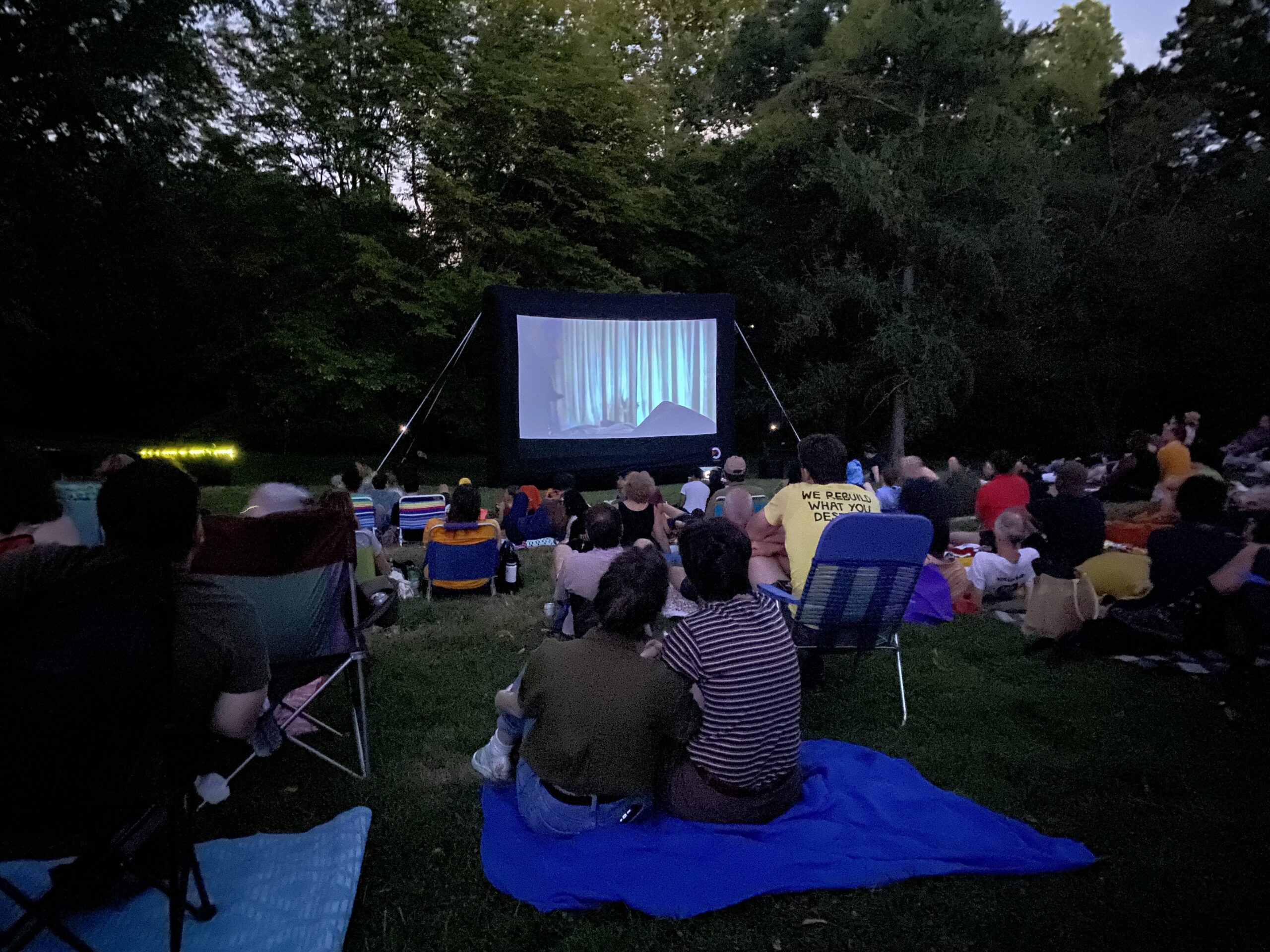
15 Feb How Pennsylvania Film Tax Credits Work
BY C.M. CROCKFORD
Pennsylvania’s Film Tax Credit Program, originally established in 2007, offers financial incentives to entertainment companies and movie productions shooting within the state. The credits were intended to help expand the local film industry as well as create new jobs. Pennsylvania’s legislature even increased the maximum amount to $100 million–from $65-70 million–in the 2022-23 state budget. The program has, however, faced plenty of criticism for its lack of effectiveness and bias towards Hollywood productions.
What exactly are tax credits, and how do film and television productions receive them? The Pennsylvania Department of Community and Economic Development (DCED) website doesn’t exactly use accessible language if you’re unfamiliar with tax law. But local filmmakers might still want to apply for what Pennsylvania filmmaker Dan Lantz called “basically free money.”
Tax Credits 101
A tax credit reduces a tax bill by a percentage or dollar amount if a person, or company, meets certain criteria with their spending. Tax credits aren’t only for the film industry. Other Pennsylvania tax credits include R&D (research and development), education, and the mixed-use development program. These incentives are used to allure business to the state, ensuring that a certain amount of the overall budget is spent locally, whether it’s for manufacturing or filmmaking.
The DCED’s Film Tax Credit Program (FTCP) is no different, though it specifically applies to film, television shows, and commercials filming statewide “intended as programming for a national audience.” The production must spend 60% of its budget on local expenses such as hotels and restaurants, and in exchange, it receives a tax credit of 25% back on those “Qualified Pennsylvania Production Expenses.” If the production also uses a “Qualified Production Facility” in Pennsylvania, it gets 5% more on expenses for a total of 30% off its taxes. It can also receive 30% off “Post-Production Expenses” if they use a qualified “Post-Production Facility.”
The Pennsylvania Film Office website features instructions on how producers and filmmakers can apply online for the FTCP. The main office is in Harrisburg, but there are also film offices that represent Philadelphia, Pittsburgh, and Central Pennsylvania. The tax credit program is intended for any Pennsylvania production regardless of regional location.

The Pennsylvania Film Office site explains, “Our mission is to help filmmakers make great films in PA using the expertise, talent, tax incentives and beautiful locations of our state.” There are extensive guidelines for filling out the application form as well as stipulations about which productions qualify. One key rule: at least 70% of the company’s financing needs to be locked down, and the remaining 30% must be secured prior to the planned start date for principal photography. Unlike other states with film tax incentives, the program doesn’t require a minimum budget amount, yet the production’s finances must be in order if they want the tax credits.
The FTCP is meant to be a win-win situation: film companies and crews get a tax break for filming in Pennsylvania, while the state puts people to work and earns revenue. “Through the Program, Pennsylvania has benefitted from the creation of thousands of jobs, billions in overall fiscal impact, and millions of dollars of in-state investment in the past two fiscal years,” the Greater Philadelphia Film Office, the film commission representing southeastern Pennsylvania, wrote via email. Yet filmmakers on the ground struggle to see this success.
Mixed Results
Pennsylvania’s Independent Fiscal Office (IFO) regularly evaluates and analyzes fiscal issues, and is required by 2017’s Act 48 to review tax incentives over a five year period. In January 2019, the Office released an evaluation of the film tax credits’ economic impact on the state. The IFO found that California, Georgia, and New York still dominate film and television production, and they regularly spent three to five times more than Pennsylvania on tax credits. Even with the Pennsylvania program’s recent funding increase, our state can’t compare to these major filming states. California alone offers productions $330 million. Pennsylvania’s tax credits helped maintain jobs, but as the IFO wrote, “[this] is likely insufficient to expand the industry due to competition from other states and the transient nature of annual production activity.”
According to the analysis, not only did most of the productions transfer or resell the credits to third parties without ever using them, but 42% of the qualified spending was on out-of-state resident wages. Overall, “the net return on investment (ROI) is 13.1 cents of state tax revenue for each tax credit dollar.” The IFO did release the report prior to the disruption of the COVID-19 pandemic, but IFO Director Matthew Knittel commented in an email that their findings were still accurate, albeit scaled up thanks to the higher budget.
A Frustrating Process for Small Productions?
Dan Lantz is a Philadelphia filmmaker who has shot several low-budget genre films on location in Delaware and Montgomery Counties, including Alpha Rift and Hayride to Hell. Lantz has received the state’s tax credits before and emphasized that he doesn’t feel entitled to the money, but calls the application process “very opaque” and “not filmmaker friendly.” For one, he’s still unsure why Hayride to Hell was turned down by the program. “The executive producers did everything we were supposed to, but [the office] still said ‘no’ without telling us why.”

The DCED did set aside $5 million in credits for smaller, independent productions in 2022, but according to The Philadelphia Inquirer, that money went to M. Night Shyamalan’s Knock at the Cabin instead of multiple low-budget films. Most of the recent FTCP recipients, in fact, have been bigger budget movies and shows. Independent director Lantz certainly doesn’t plan on applying for tax credits again. “I shoot in other states because at the end of the day, I can count on New Mexico. I can count on New York. I can’t count on shooting in Pennsylvania.”
What’s Next for the Program
The IFO makes several recommendations for the FTCP in the 2019 report, including increasing the credit amount, making it refundable to discourage resales, and allocation pools for small and mid-budget productions. Some of these changes have been put into place since, especially with the recent jump to $100 million in funds. Jeffrey A. Johnson of The Pennsylvania Department of Revenue also pointed to figures in the IFO report indicating the state received a net GDP increase of $93 million and a net increase of 1,140 jobs because of film tax credits. However, the report notes that this figure is based on the assumption that “90% of productions are incentivized by the tax credit. If the true figure is half that, then the tax credit has no material net economic impact.”
IFO Director Knittel believes that the program in Pennsylvania is not substantial enough to develop and expand the state’s film industry as intended. The credits are often sold again, and thus aren’t spent on any actual local production, or they go to paying actors and crew members from outside the state. The IFO will release another report on the FTCP later in 2024. The office may be able to pinpoint where the Film Tax Credit Program has improved since 2019, and given the impact of the pandemic, how it can still help build a stronger entertainment industry in Pennsylvania.
*Featured Image: Image from a cinéSPEAK outdoor screening. Courtesy of cinéSPEAK.

C.M. Crockford is a neurodivergent writer and editor originally from New England. His work has been featured in the Cleveland Review of Books, In The Mood Magazine, Vastarien, Vast Chasm Magazine, and Broad Street Review.

Sorry, the comment form is closed at this time.